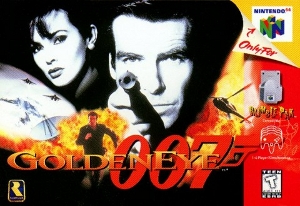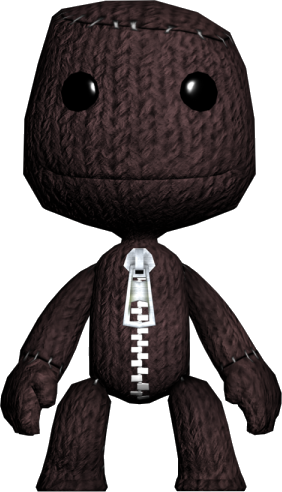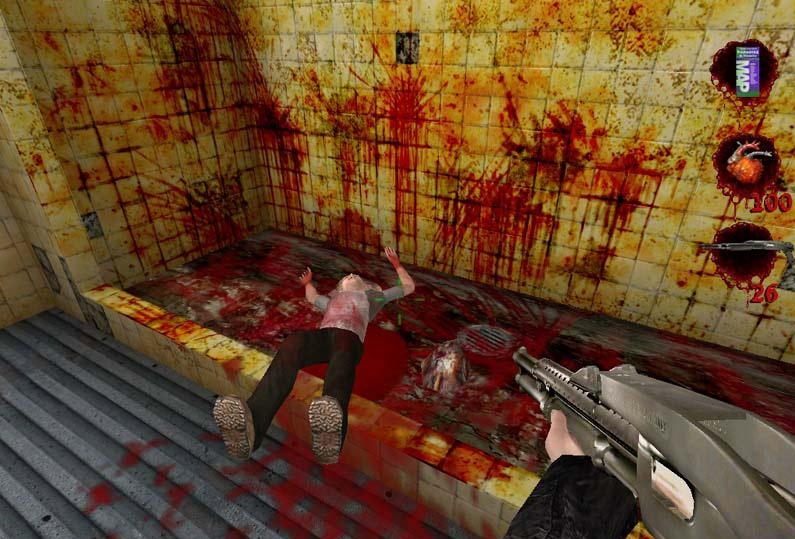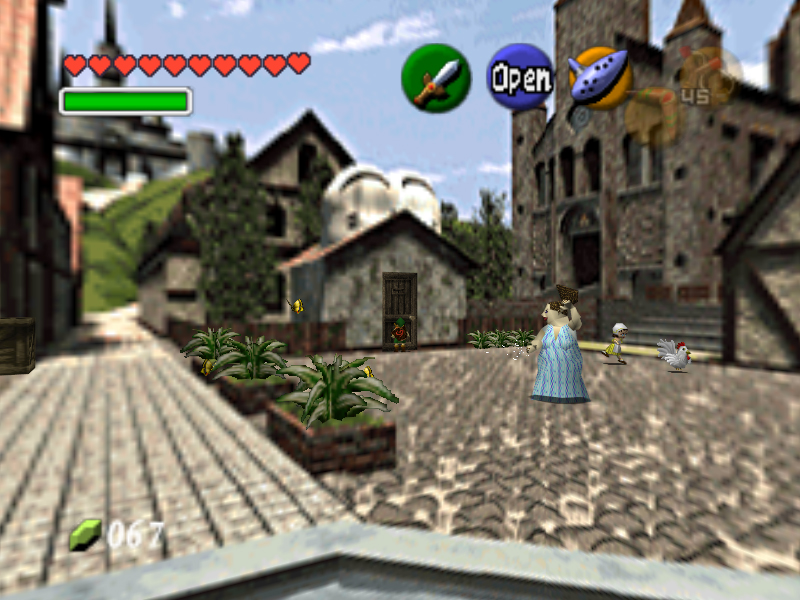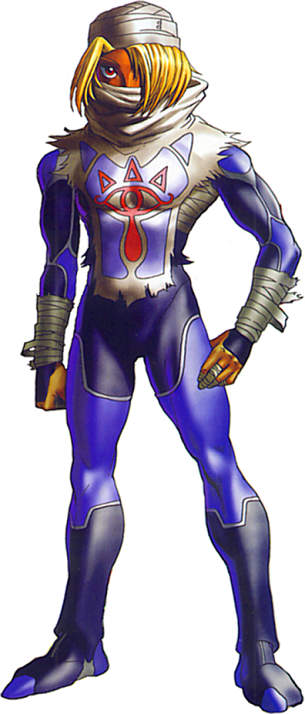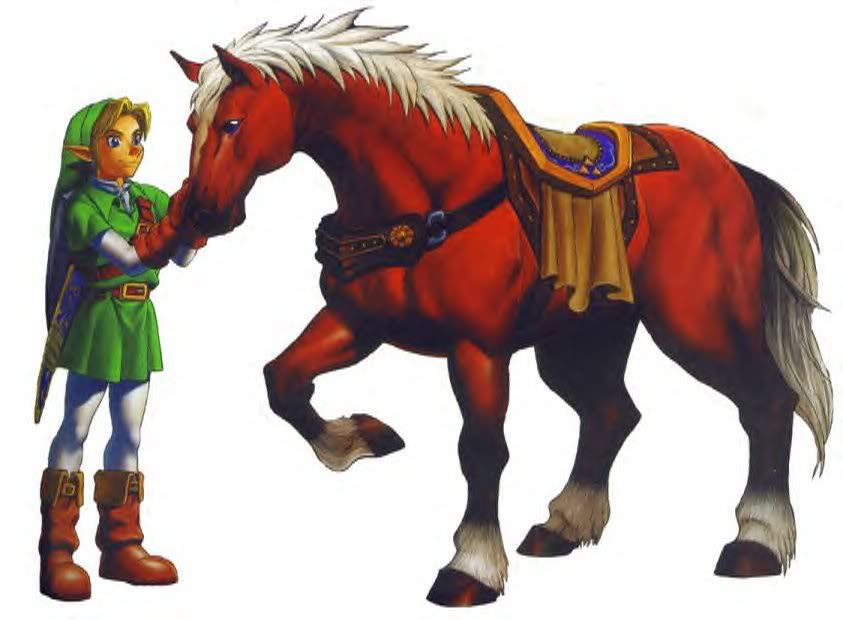I mentioned in my introduction why music is important to video games. I am going to expand on this topic and go through why video game music is so important to the artform. Music is in bascially every game, some times it plays a more significant part then in others. In some games music is just background noise to set the mood. In others, music is the game and the player has a more direct influence over how the music sounds. Both of these methods of video game music are equally important, and it all depends on the game which way the music should be used.
The LoopSome games do not have a set time limit, or the time limit is so long that it's unrealistic to create one song to encompass the entire level. In these cases it is important for the musical composers to create a song that works as a loop. The song has to begin and end the same way. Not only does this effectively fill up a level of any length but also because of the content looping helps get the song in the gamers head making it memerable. The loop can have drawbacks if the loop is too short. It turns from catchy, fun, and classic, into annoying and irritating.
Timed SongSome songs are timed for specific events. For example in Halo you go around with barely a note played but once a battle starts the music comes in. This makes the song not only stand out against the stark silence that came before but also sets the mood for the battle. Music can cue the player how to play, and the timed song does this the best. Having a song fade in or out and change depending on the atmosphere of the game can really inhance the mood. The oinly problem with the timed song is what to put in between one song and another, since they don't always mesh together.
Interactive SongNow this is a very new and experimental type of gameplay that isn't used that much, most likely because it is difficult to pull off with great success. Now some rhythm instrument games like Guitar Hero, or Rock Band fall into this category. Those games have music as their main focus and it is fairly easy to set gameplay around it, press the buttons at the right time to make the music. This is not so much interactive music as it is a timing excerise. It's a lot of fun and gives the player the idea that he/she is actually playing the music. This is the most common type of interactive music.
The other form of interactive music does not require picture perfect timing and is a lot harder to pull off successfully. In these games the music goes along with the player no matter when the buttons are hit. Unlike the previous games the music always sounds different. Here are some games to give you a better idea what I am talking about.
Space Invaders Extreme
There is music in the background but hitting the enemies adds notes to the score. Different weapons provide different sounds. The music alone is just part of the overall picture and is only fully appreciated when playing the game.
REZ
A full on music game that only has a simple tune in the background. Shooting eniemes and leveling up make the music change as you play. You are essentially exploring the musical scores and manipulating it as you play the game.
Lumines
A puzzle game that adds different sounds as you break the pieces. The music gets more complex the better you do at the game. Also the blocks break at the speed of the beat of the game, so each level is different depending on the song.
Sound FXSound FX is probably the biggest challange for video game composers. Every time your character shoots, jumps, hits an enemie, dies, and many other things, a sound FX usually occurs. These sounds have to compliment the music in the game. While they do not directly effect the music they are still played on top of it. It would be jarring to hear a sound that does not go along with the overall score. This is why when Mario jumps it sounds different from when Sonic jumps, each sound effect has to go along with the music in their repective games. You are in control of the hero and its up to you how you play with it, the sound FX designer has to make sure every sound you can possibly make will fit into the musical score of the game.
Player's MoodEverything I mentioned before is an answer for"how" video game music is used, but an equally important aspect is the "why." I touched on this aspect before in my intro blog post but I think that it is such an important part of the video game artform I have to also expand on this. If the composers have done their job properly not only will the music fit into the game thematically, and go together with the sound FX but also relay an emotion to the player. If you are going to have a level in a forest, the music should be light and fun, connecting the player to the mood of nature. When the player is in a lava level, light fun music won't cut it, you need a faster paced tune. If you are in a dark dungeon the music should have a dark or "echo" sound to it further bringing the player into the environment. The music should connect to the player by bringing him/her into the environment as well as letting the player know how much action to expect on the screen. So if you are in a light easy forest level but you are at the boss and the action has picked up the music should not stay all light and slow, it should pick up a bit while still maintaining the feel of the level. I will leave off this post with some examples of music effecting mood, and gameplay.
Shadow of the Colossus Boss fights
Then game is extremely silent for the most part. The silence ends however, when you finally meet up with a Colossus. The music stand out against the stark silence of the rest of the game, and gets the player ready for a battle.
Sonic First level
The music is much faster than most platformers. Sonic was also a much faster game than any before it. Helping the player get the idea that this game was meant to be played at high speeds was the music
Zelda Lost woods
A light song you hear on your way up to the forest temple and the surrounding area. The song, played mostly using wind instruments, helps connect the sound back to nature. This is a great piece that could not fit any better in the environment.
Metroid
One of the first open world side scrollers. This game was extremely difficult when I first encountered it because of its lack of any real direction, it really confused me at the time. The music is just as mysterious and dark as this game. Here is a sample from the game called "Kraid"
Duck Tales The Moon
One of the best tv series turned video game. One level has you searching through the moon for treasure. This song really captures the sci fi feel while keeping the action alive.
Music can do so much for a game. Whether it is setting the mood, or being an part of the gameplay it is an equally important part of the video game artform. Next time you play a game listen to the music and see how it matches your experience. Think back to songs you remember fondly, chances are you have a connection with them because not only were they beautifully compossed but also because they fit so well in the game's environment.
 The year is 1987, your parents let you rent one game from the local dingy video store. You see a boxing game and think, “this would be fun for me and my brother to play.” You take it home and immediately start playing. The controls are stiff and the boxing isn’t realistic but this is regular Nintendo you put up with it. Round one ends... and then you see your cornerman doing something strange to your character. Your father, who was half watching you play, notices the act immediately and tells you to “TURN THAT GAME OFF!” Little did you know you had just witnessed the cornerman giving the boxer a blowjob, right there in 8 bit glory.
The year is 1987, your parents let you rent one game from the local dingy video store. You see a boxing game and think, “this would be fun for me and my brother to play.” You take it home and immediately start playing. The controls are stiff and the boxing isn’t realistic but this is regular Nintendo you put up with it. Round one ends... and then you see your cornerman doing something strange to your character. Your father, who was half watching you play, notices the act immediately and tells you to “TURN THAT GAME OFF!” Little did you know you had just witnessed the cornerman giving the boxer a blowjob, right there in 8 bit glory. 


